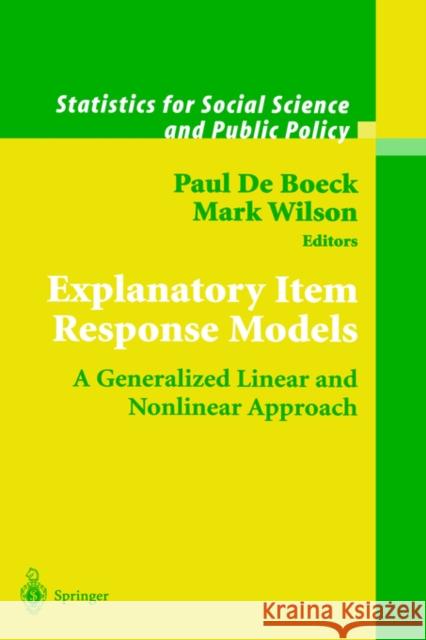Explanatory Item Response Models: A Generalized Linear and Nonlinear Approach » książka
Explanatory Item Response Models: A Generalized Linear and Nonlinear Approach
ISBN-13: 9780387402758 / Angielski / Twarda / 2004 / 382 str.
Explanatory Item Response Models: A Generalized Linear and Nonlinear Approach
ISBN-13: 9780387402758 / Angielski / Twarda / 2004 / 382 str.
(netto: 734,36 VAT: 5%)
Najniższa cena z 30 dni: 765,72 zł
ok. 20 dni roboczych.
Darmowa dostawa!
This edited volume gives a new and integrated introduction to item re- sponse models (predominantly used in measurement applications in psy- chology, education, and other social science areas) from the viewpoint of the statistical theory of generalized linear and nonlinear mixed models. Moreover, this new framework aHows the domain of item response mod- els to be co-ordinated and broadened to emphasize their explanatory uses beyond their standard descriptive uses. The basic explanatory principle is that item responses can be modeled as a function of predictors of various kinds. The predictors can be (a) char- acteristics of items, of persons, and of combinations of persons and items; they can be (b) observed or latent (of either items or persons); and they can be (c) latent continuous or latent categorical. Thus, a broad range of models can be generated, including a wide range of extant item response models as weH as some new ones. Within this range, models with explana- tory predictors are given special attention, but we also discuss descriptive models. Note that the 'item responses' that we are referring to are not just the traditional 'test data, ' but are broadly conceived as categorical data from a repeated observations design. Hence, data from studies with repeated-observations experimental designs, or with longitudinal designs, mayaIso be modeled. The intended audience for this volume is rather broad.











